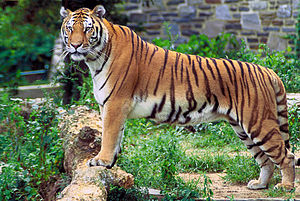Shatabdi Trains: The fast and the furious!
 Shatabdi Express is the distinctive train service provided by the Indian Railways. In India, Shatabdi Express is a superfast passenger train connecting the major cities, metro towns and business centers. Indian Railways run a series of superfast Shatabadi Express trains to facilitate people in commuting to different places.Shatabdi Express are day-trains and they return to the station of origin the same day.
Shatabdi Express is the distinctive train service provided by the Indian Railways. In India, Shatabdi Express is a superfast passenger train connecting the major cities, metro towns and business centers. Indian Railways run a series of superfast Shatabadi Express trains to facilitate people in commuting to different places.Shatabdi Express are day-trains and they return to the station of origin the same day.
Shatabdi Express is an intercity train that doesn't cover long distances. It is one of the two fastest trains in India, the other being Rajdhani Express. Esteemed service of the Indian Railways, Shatabdi Express Trains usually run over short distances. The regular speed of these trains is known to be 130 kilometers per hour.

 The Bengal tiger, or Royal Bengal tiger (Panthera tigris tigris or Panthera tigris bengalensis), is a subspecies of tiger primarily found in India and Bangladesh, The Bengal tiger is one of the largest and the most numerous of the tiger sub-species, with about 1,411 wild tigers being reported by the Government of India's National Tiger Conservation Authority.Once found throughout the Indian subcontinent, the Bengal tiger's natural habitat has drastically reduced due to their increasing interactions with humans.Most tigers in India, home to about 50% of the world's tiger population, are fragmented into many small isolated populations making them vulnerable to extinction. The most distinctive characteristic of a tiger is certainly the orange and black stripes that appear on the tiger's pelt.The Bengal Tiger is one of the largest cats in the world, second only to its cousin, the Siberian tiger.
The Bengal tiger, or Royal Bengal tiger (Panthera tigris tigris or Panthera tigris bengalensis), is a subspecies of tiger primarily found in India and Bangladesh, The Bengal tiger is one of the largest and the most numerous of the tiger sub-species, with about 1,411 wild tigers being reported by the Government of India's National Tiger Conservation Authority.Once found throughout the Indian subcontinent, the Bengal tiger's natural habitat has drastically reduced due to their increasing interactions with humans.Most tigers in India, home to about 50% of the world's tiger population, are fragmented into many small isolated populations making them vulnerable to extinction. The most distinctive characteristic of a tiger is certainly the orange and black stripes that appear on the tiger's pelt.The Bengal Tiger is one of the largest cats in the world, second only to its cousin, the Siberian tiger. Electronic Voting Machine (EVM) retains all the characteristics of voting by ballot papers, while making polling a lot more expedient. Being fast and absolutely reliable, the EVM saves considerable time, money and manpower. And, of course, helps maintain total voting secrecy without the use of ballot papers. The EVM is 100 per cent tamper proof. And, at the end of the polling, just press a button and there you have the results
Electronic Voting Machine (EVM) retains all the characteristics of voting by ballot papers, while making polling a lot more expedient. Being fast and absolutely reliable, the EVM saves considerable time, money and manpower. And, of course, helps maintain total voting secrecy without the use of ballot papers. The EVM is 100 per cent tamper proof. And, at the end of the polling, just press a button and there you have the results Coorg or Kodagu (originally called Kodaimalenadu) means 'dense forest on steep hill'. Dubbed as the Scotland of India, this town has a lot to offer to the tourist. Misty hills, lush forest, acres and acres of tea and coffee plantation, orange groves, undulating streets and breathtaking views are what make Madikeri an unforgettable holiday destination. Coorg is on the Western Ghats. Set amidst verdant valleys, imposing mountains and teak wood forests, this is one of the most beautiful hill stations you can visit. It lies on Karnataka's southwestern end, covering an area of 4,102 sq km.The wooded slopes, quaint villages, colorful scenery and undulating landscape has fascinated tourists until today. Endless mountain ranges, ridge after ridge of grassy and forest clad slopes raising to the sky, give Coorg its unique & irreplaceable character.
Coorg or Kodagu (originally called Kodaimalenadu) means 'dense forest on steep hill'. Dubbed as the Scotland of India, this town has a lot to offer to the tourist. Misty hills, lush forest, acres and acres of tea and coffee plantation, orange groves, undulating streets and breathtaking views are what make Madikeri an unforgettable holiday destination. Coorg is on the Western Ghats. Set amidst verdant valleys, imposing mountains and teak wood forests, this is one of the most beautiful hill stations you can visit. It lies on Karnataka's southwestern end, covering an area of 4,102 sq km.The wooded slopes, quaint villages, colorful scenery and undulating landscape has fascinated tourists until today. Endless mountain ranges, ridge after ridge of grassy and forest clad slopes raising to the sky, give Coorg its unique & irreplaceable character.